#node.js vs Spring Boot
Explore tagged Tumblr posts
Text
Node.js or Spring Boot- which is the best backend development Framework?
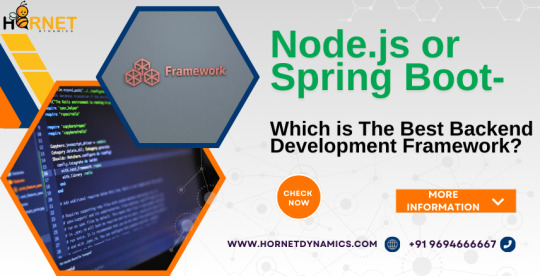
Hornet Dynamics is a renowned company in backend development and if you are searching for the answer of Which framework is best for backend application development between Node.js and Spring Boot then free yourself from this worry and come to us for every answer to your problem related to web development.
0 notes
Text
Navigating the Full Stack Development Lifecycle: From Concept to Deployment
In today’s fast-paced digital landscape, building a web application is more than just writing code — it's about turning an idea into a real, working solution that people can interact with. This journey, known as the full stack development lifecycle, is one that many developers walk daily. Whether you’re a beginner stepping into the world of web technologies or someone aiming to become a professional, understanding this lifecycle is key to building robust, scalable, and user-friendly applications.
At the heart of this journey is the full stack web developer, a professional who bridges the gap between front-end user experience and back-end data handling. With the right skills and structured training such as full stack web development by TechnoBridge, aspiring developers can confidently handle every layer of web application development, from concept to deployment.
Let’s break down the full stack lifecycle and understand how an idea becomes a fully functioning application.
1. Ideation and Planning
Everything begins with a concept. Maybe it's a new e-commerce site, a productivity tool, or a social networking app. The ideation phase involves brainstorming and outlining what problem the app will solve, who the users are, and what features it should include.
Define the core purpose of the application
Conduct market research and competitor analysis
Create user personas to understand user needs
Prioritize features for the minimum viable product (MVP)
Here, the full stack web developer works with stakeholders or clients to align technical possibilities with business goals.
2. Designing the Architecture
Once the idea is clear, it’s time to design the system. Architecture planning includes deciding how the front end and back end will communicate, which frameworks to use, and what databases will store the data.
Choose tech stacks (e.g., MERN, MEAN, LAMP)
Plan the database schema (SQL vs NoSQL)
Create API routes and data flow maps
Define security protocols and user authentication strategies
Courses like full stack web development by TechnoBridge help learners master this stage by teaching both theory and practical architecture planning using real-world case studies.
3. Front-End Development
This is the visual part — what users see and interact with. From layouts to buttons, everything you click, type, and swipe on a website is crafted by the front-end developer.
A full stack web developer must know:
HTML5, CSS3, and modern JavaScript (ES6+)
Responsive design with Flexbox or Grid
Front-end libraries/frameworks like React, Angular, or Vue.js
UX/UI principles for optimal user experience
Thanks to programs like full stack web development by TechnoBridge, developers get hands-on exposure to these tools, learning how to build interfaces that are both attractive and functional.
4. Back-End Development
This is the engine behind the scenes. The back end manages data, handles requests, and ensures everything works smoothly on the server side.
Programming languages like Node.js, Python, PHP, or Java
Frameworks such as Express.js, Django, or Spring Boot
RESTful APIs and server-side routing
Database interactions using MySQL, MongoDB, or PostgreSQL
A full stack web developer ensures that the server, application, and database communicate seamlessly. Learning full stack web development by TechnoBridge empowers developers with server-side scripting skills, real-time database management, and deployment knowledge.
5. Testing and Debugging
No web application is perfect on the first try. Testing is essential to catch bugs, ensure performance, and provide a seamless experience to users.
Unit testing and integration testing
Automated testing with tools like Jest or Mocha
Debugging browser and server-side errors
User acceptance testing (UAT)
Professionals trained in full stack web development by TechnoBridge are equipped to use modern testing tools and methodologies to minimize errors and improve performance.
6. Deployment
Once everything is tested and ready, it’s time to make the application live. Deployment involves pushing your code to a server so users can access it online.
Using platforms like AWS, Heroku, or Netlify
Continuous Integration/Continuous Deployment (CI/CD) pipelines
Domain setup and DNS configuration
Monitoring uptime and performance
A full stack web developer doesn't just build apps — they launch them and keep them running. That’s why real-world deployment training, as offered in full stack web development by TechnoBridge, is so vital for career readiness.
7. Maintenance and Updates
The launch is not the end — it’s the beginning of another phase. Regular updates, bug fixes, feature enhancements, and user feedback become a continuous cycle.
Monitor server logs and analytics
Patch security vulnerabilities
Add new features based on user feedback
Optimize for performance and SEO
By understanding the entire lifecycle, a full stack web developer becomes a valuable asset to any team or project.
Final Thoughts
The path from concept to deployment is full of learning, iteration, and innovation. A career in full stack development requires not just coding skills but a deep understanding of how each layer of technology interacts with the others. That’s why structured training programs like full stack web development by TechnoBridge are crucial — they don’t just teach you how to code, but how to think like a developer across the full stack.
So, whether you’re building your first app or your fiftieth, remember: the best developers are those who never stop learning — and who can navigate the full stack lifecycle with confidence and clarity.
0 notes
Text
Front End and Back End Developer in Pune
Looking to hire top Front End or Back End developers in Pune? Associative offers expert web and app development services. Learn about our skilled team and how we can help your project succeed.
In today's digital landscape, a robust and user-friendly online presence is crucial for business success. Whether you're building a dynamic website, a feature-rich mobile application, or a complex e-commerce platform, the expertise of skilled front end and back end developers is indispensable. If you're based in or looking to partner with a software company in Pune, understanding the roles and finding the right talent is key.
At Associative, a leading software company located in Pune, India, we pride ourselves on our team of highly proficient front end and back end developers. We understand the critical interplay between these two vital aspects of software development and are equipped to deliver exceptional results for your projects.

Understanding the Roles: Front End vs. Back End Developers
Before seeking to hire, it's important to understand the distinct responsibilities of front end and back end developers:
Front End Developers: These are the architects of the user experience. They focus on what you see and interact with on a website or application – the design, layout, buttons, animations, and overall responsiveness. They utilize technologies like HTML, CSS, and JavaScript, along with frameworks such as React.js, to create engaging and intuitive interfaces.
Back End Developers: These developers are the engine room of your digital product. They handle the server-side logic, databases, and APIs that power the front end. They ensure that the application functions smoothly, securely, and efficiently. Our back end developers at Associative are proficient in languages and frameworks like Node.js, Express.js, Java, Spring Boot, PHP, and utilize databases such as MySQL and PostgreSQL.
Why a Strong Development Team Matters
The seamless collaboration between skilled front end and back end developers is crucial for:
Enhanced User Experience: A well-designed front end coupled with a robust back end ensures a smooth and enjoyable user journey.
Improved Performance: Efficient back-end coding and optimized front-end delivery lead to faster loading times and better application performance.
Scalability and Security: A well-structured back end can handle increasing user loads and provides a strong foundation for security measures.
Maintainability and Updates: Clean and well-organized code from both ends makes it easier to maintain, update, and add new features in the future.
Associative: Your Partner for Front End and Back End Development in Pune
As a comprehensive software development company in Pune, Associative boasts a diverse and experienced team of both front end and back end developers. Our expertise spans a wide range of technologies and platforms, ensuring we can cater to the unique requirements of your project.
Our skilled developers are proficient in:
Front End Technologies: React.js, HTML, CSS, JavaScript, and more.
Back End Technologies: Node.js, Express.js, Java, Spring Boot, PHP, Kotlin, Swift, and more.
Database Management: MySQL, PostgreSQL, and others.
Platform-Specific Development: Expertise in frameworks and platforms like Magento, WordPress, Shopify, and more, often requiring both front end and back end customization.
Whether you need a stunning e-commerce website built on Magento, a dynamic web application using React.js and Node.js, or a custom solution tailored to your specific needs, our front end and back end developers in Pune work collaboratively to bring your vision to life.
Beyond Web Development: Our Full-Stack Capabilities
While we highlight front end and back end expertise, many of our developers possess full-stack capabilities, meaning they are proficient in both areas. This allows for greater flexibility and seamless integration throughout the development process.
Partner with Associative for Your Development Needs
If you are looking for experienced and reliable front end and back end developers in Pune, Associative is your ideal partner. We are committed to delivering high-quality, scalable, and innovative software solutions.
youtube
1 note
·
View note
Text
Web Development vs. Software Development: Key Differences

Web Development vs Software Development Key Differences is an important topic for anyone considering a career in the tech industry. Web development focuses on designing, constructing, and maintaining websites and web applications, while software development involves creating applications that run on various platforms such as computers, mobile devices, and embedded systems. Understanding the key differences between these two fields can help you choose the right career path.
What Is Web Development?
Definition and Overview
The web development process is responsible for designing, constructing, and maintaining websites and web applications. This process can include tasks ranging from laying out the design of a website to writing the back-end code that gets it to really work.
Types of Web Development
Frontend Development: Deals with the visible part of the website as well as user experience through languages like HTML, CSS, JavaScript.
Backend Development: Handles the server, the database, the server-side scripting, and the application logic via languages like PHP, Python, Node.js.
Full Stack Development: Combines the method of frontend and backend development all together.
What Is Software Development?
Definition and Overview
Software development is referred to as the process involving the conception, specification, design, programming, testing, and maintenance of software applications, which can operate on various platforms such as computers, handheld devices, and embedded systems.
Types of Software Development
Desktop Software Development: These applications link with the operating system of computers, which can be either Windows or macOS or Linux.
In Mobile App Development, software for mobile devices for Android and iOS platforms.
Embedded Systems Development: Involves the software running an application for specific hardware such as smart TVs, IoT devices, and automotive systems.
Skills Required for Web Development
Programming Languages: HTML, CSS, JavaScript, PHP
Frameworks: React.js, Angular, Vue.js
Databases: MySQL, MongoDB
Versioning: Git and GitHub
Skills Required for Software Development
Programming Languages: Java, Python, C++
Frameworks: .NET, Spring Boot, Electron
Databases: PostgreSQL, SQLite
Development Tools: Visual Studio, IntelliJ IDEA
Career Opportunities in Web Development
Frontend Developer
Backend Developer
Full Stack Developer
Web Designer
E-commerce Developer
Salary Trends
Entry-Level: $50,000 – $70,000 per year
Mid-Level: $70,000 – $100,000 per year
Senior-Level: $100,000+ per year
Career Opportunities in Software Development
Software Engineer-Mobile application developer
Mobile App Developer
Game Developer
Data Scientist
AI/ML Engineer
Salary Trends
Entry-Level: $60,000–$80,000 a year
Mid-Level: $80,000–$120,000 a year
Senior Level: $120,000 and above a year
Which Career Path is for You?
Web development suits you if you like designing and programming for the web.
Software development is for you if you enjoy doing something across different platforms on complex applications.
Both fields are very rewarding, but generally speaking, software development is better paid and somewhat more complicated.
Conclusion
Both web development and software development are rewarding career paths with great opportunities. If you are looking for structured training in either field, TCCI-Tririd Computer Coaching Institute provides expert guidance and practical courses to help you master the necessary skills. Whether you aspire to become a web developer or software engineer, investing in the right education will set you up for success.
Location: Bopal & Iskon-Ambli Ahmedabad, Gujarat
Call now on +91 9825618292
Get information from: https://tccicomputercoaching.wordpress.com/
0 notes
Text
Top Technologies to Hire Dedicated Developers in India
Hiring dedicated developers in India is a strategic decision for startups, SMBs, enterprises, and tech firms worldwide. India has established itself as a global leader in software development, offering a vast talent pool, cost-effective solutions, and expertise in cutting-edge technologies. Companies looking to hire dedicated developers in India benefit from affordability, expertise, and seamless collaboration with offshore development teams.
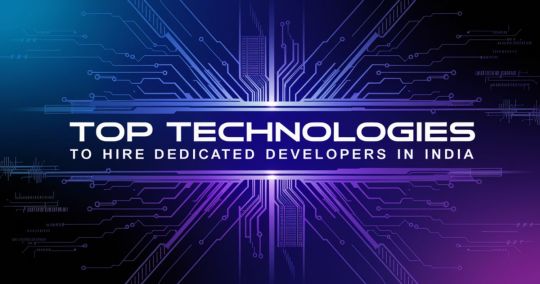
However, navigating the hiring landscape while balancing cost, quality, and project execution can be challenging. This guide will help you identify the best technologies to hire dedicated developers in India, explore the top platforms to find dedicated developers in India, and highlight cost-effective ways to hire Indian software developers.
Why India is a Leading Hub for Dedicated Developers
1) Large Talent Pool with Diverse Expertise:
India produces over 1.5 million engineering graduates annually, with expertise in full-stack development, cloud computing, AI, blockchain, and other emerging technologies. This ensures access to a diverse and highly skilled workforce, making it an attractive option to hire Indian software developers for various projects.
2) Cost-Effective Development Without Quality Compromise:
Hiring offshore developers in India can save businesses 40–70% compared to the USA, UK, or Europe, making it a practical option for companies operating under budget constraints.
3) Strong Educational Background & Technical Excellence:
Indian developers have a robust foundation in STEM (Science, Technology, Engineering, and Mathematics), enabling them to excel in problem-solving, software architecture, and complex coding. This makes it easier for companies to hire a dedicated development team in India that aligns with their project needs.
4) Supportive Government Policies & IT Infrastructure:
India’s IT-friendly policies, tax incentives, and world-class tech infrastructure make it a preferred offshore development hub, further boosting the demand for offshore developers in India.
Top Technologies for Hiring Dedicated Developers in India
1. Web Development Technologies
JavaScript Frameworks (React.js, Angular, Vue.js):
React.js — Best for fast, scalable UIs (used by Facebook, Instagram, Airbnb).
Angular — Ideal for enterprise-grade applications with robust architecture.
Vue.js — Lightweight and flexible, perfect for startups and dynamic web apps.
Backend Technologies:
Node.js — Best for real-time applications (used by Netflix, LinkedIn, PayPal).
PHP & Laravel — Cost-effective web development; Laravel ensures security & scalability.
Python & Django/Flask — Ideal for data-driven and high-security applications.
2. Mobile App Development Technologies
Cross-Platform Development:
Flutter — Single codebase for iOS & Android (used by Google Ads, Alibaba, BMW).
React Native — Developed by Facebook, ideal for hybrid mobile applications.
Native Mobile Development:
Swift — Apple’s preferred language for iOS development.
Kotlin — Google-backed, the standard for Android app development.
3. Enterprise & Backend Development Technologies
Java & Spring Boot — Scalable & secure enterprise applications (used in banking & healthcare).
.NET & C# — Best for Microsoft-based enterprise solutions.
Golang — High-performance backend development, cloud computing, AI, and microservices.
4. Emerging & Niche Technologies
Blockchain (Ethereum, Hyperledger) — Ideal for fintech, smart contracts, supply chain management.
AI & Machine Learning (TensorFlow, PyTorch) — Used for chatbots, automation, predictive analytics.
DevOps & Cloud (AWS, Azure, Kubernetes) — Ensures seamless CI/CD pipelines & automated deployments.
Cybersecurity — Essential for data protection and compliance.
Key Factors to Consider When Hiring Dedicated Developers in India
A. Cost & Budget Considerations:
Compare offshore vs. in-house costs.
Assess long-term ROI rather than just initial cost savings.
B. Quality & Skillset Assessment:
Verify developer expertise in relevant technologies.
Review portfolios, case studies, and previous client feedback.
C. Communication & Time Zone Management:
Ensure clear communication via Slack, Zoom, Jira, Trello.
Hire developers comfortable with Agile methodologies.
D. Project Management & Risk Mitigation:
Set clear milestones, deliverables, and quality assurance benchmarks.
Establish security protocols for protecting sensitive information.
Top Platforms to Find Dedicated Developers in India
1) Freelance Platforms:
Upwork, Fiverr — Ideal for short-term projects and independent developers.
2) Dedicated Hiring Platforms:
Turing, Toptal — Pre-vetted developers for high-quality, complex projects.
3) IT Outsourcing Companies & Agencies:
Best for businesses seeking long-term, scalable development teams with end-to-end project management.
4) Direct Recruitment via LinkedIn & Job Boards:
Perfect for startups and enterprises looking to hire full-time developers.
Advantages of Hiring Offshore Developers from India
Cost Savings — Businesses can reduce costs significantly by hiring Indian software developers.
Access to Skilled Talent — A vast pool of developers proficient in the latest technologies.
Scalability — Easily expand or downsize teams based on project needs.
Time Zone Advantage — 24/7 development cycle with overlapping work hours.
Strong Work Ethic — Indian developers are known for their commitment and problem-solving abilities.
How to Hire Dedicated Developers in India
Define Project Requirements — Clearly outline the technologies, skills, and experience needed.
Choose the Right Hiring Model — Decide between freelance, dedicated teams, or IT outsourcing.
Evaluate Developer Skills — Conduct coding tests, portfolio reviews, and technical interviews.
Ensure Smooth Onboarding — Set up communication channels and development workflows.
Conclusion:
Hiring dedicated developers in India is a smart choice for businesses looking to build high-quality software solutions while optimizing costs. With expertise in top technologies like web development, mobile app development, enterprise solutions, and emerging fields like AI and blockchain, India offers a vast talent pool to meet diverse project needs.
By carefully selecting the right technology stack, assessing developer skills, and choosing the best hiring platform, businesses can successfully scale their development teams and achieve long-term success.
Looking to hire dedicated developers in India? Partner with iQlance to get top-tier software developers specializing in web, mobile, and enterprise solutions. Build your dream team with expert developers tailored to your project needs. Contact us today to get started!
#hirededicateddevelopersinindia#besttechnologiestohiredevelopersinindia#toptechnologiesfordedicateddevelopers#hiresoftwaredevelopersinindia#hirewebdevelopersinindia#hiremobileappdevelopersinindia#offshorededicateddevelopersindia#indiadedicateddevelopmentteam#besttechstackforhiringdevelopers#howtohirededicateddevelopersinindia
0 notes
Text
Java Full Stack vs. Other Tech Stacks: Why Choose Java for Your Career?
The technology landscape offers a plethora of options for developers, from Python and JavaScript to emerging technologies like Go and Rust. Among these, Java Full Stack Development remains a steadfast choice for aspiring and seasoned developers. With its robustness, scalability, and extensive ecosystem, Java continues to dominate the tech world. Let's explore how Java Full Stack compares to other popular stacks and why choosing Java can be a career-defining decision—especially with the expert guidance of Appwars Technologies.
Understanding Java Full Stack Development
A Java Full Stack developer is proficient in both front-end and back-end development using Java-based tools and frameworks. Typically, a Java Full Stack includes:
Front-end: HTML, CSS, JavaScript, frameworks like Angular or React
Back-end: Java, Spring Boot, Hibernate
Database: MySQL, PostgreSQL, or MongoDB
Tools & Platforms: Maven, Docker, Kubernetes
This stack equips developers with the versatility to create dynamic, scalable, and secure web applications.
Comparison: Java Full Stack vs. Other Tech Stacks
1. Java Full Stack vs. MERN Stack
The MERN Stack (MongoDB, Express.js, React, Node.js) is a favorite among startups for rapid development. However, it often lacks the enterprise-level robustness Java provides.
Advantages of Java Full Stack:
Scalability: Ideal for large, complex systems like banking and healthcare applications.
Security: Java’s built-in features and frameworks like Spring ensure enterprise-grade security.
Performance: Java's JVM optimizes performance for high-traffic applications.
MERN Strengths: rapid prototyping and ease of learning, but limited in handling enterprise-grade requirements.
2. Java Full Stack vs. MEAN Stack
The MEAN Stack (MongoDB, Express.js, Angular, Node.js) is similar to MERN but replaces React with Angular.
Advantages of Java Full Stack:
Stability: Long-term support and stability make Java preferable for industries requiring longevity.
Ecosystem: Tools like Spring and Hibernate provide unmatched ORM and dependency injection support.
MEAN Strengths: Suitable for modern single-page applications, but it struggles with the complexity of legacy system integration.
3. Java Full Stack vs. Python-Django Stack
The Python-Django Stack excels in rapid development and data-centric applications.
Advantages of Java Full Stack:
Multithreading: Java supports efficient multithreading for high-performance applications.
Platform Independence: Java’s "write once, run anywhere" approach ensures cross-platform compatibility.
Python-Django strengths: faster development cycles and simpler syntax, but it may lack the same level of performance and scalability for larger systems.
4. Java Full Stack vs..NET Stack
The.NET Stack, powered by Microsoft, is a close competitor to Java, particularly in enterprise development.
Advantages of Java Full Stack:
Open-Source: Java's open-source nature and extensive libraries offer flexibility without vendor lock-in.
Cross-Platform: Java runs seamlessly across multiple operating systems, while .NET heavily leans on Windows environments.
.NET Strengths: Superior integration with Microsoft products but limited flexibility outside the Microsoft ecosystem.
Why Choose Java for Your Career?
High Demand and Stability Java remains one of the most in-demand programming languages globally. Companies across industries—finance, healthcare, retail, and more—rely on Java for mission-critical applications.
Extensive Community Support With decades of development and a thriving community, Java developers have access to a wealth of resources, tutorials, and libraries to solve problems efficiently.
Scalability and Performance Java's ability to handle complex, high-traffic systems makes it the go-to choice for enterprises.
Diverse Career Opportunities Java Full Stack developers are versatile, opening doors to roles like software engineer, solution architect, and technical lead.
Appwars Technologies: Your Gateway to Java Full Stack Excellence
Transitioning to a Java Full Stack career requires the right training and mentorship. Appwars Technologies, with its expert AI-driven learning solutions and comprehensive tech training programs, is the ideal partner for your career growth.
Customized Learning Paths: tailored programs to match your skill level, from beginner to advanced.
Hands-On Projects: real-world projects that simulate enterprise challenges.
Industry-Recognized Certification: Enhance your resume with certifications trusted by leading employers.
Expert Mentorship: Learn from experienced professionals with deep expertise in Java and modern development practices.
Conclusion
While other tech stacks have their strengths, Java Full Stack Development stands out for its robustness, scalability, and versatility—qualities that are critical for long-term career success. With Appwars Technologies, you gain not just technical skills but also the confidence to tackle real-world challenges, making you a standout candidate in the competitive job market.
Take the leap into a rewarding career with Java Full Stack development today! Appwars Technologies is here to guide you every step of the way.
0 notes
Text
Essential Full Stack Development Interview Questions to Prepare For Your Next Job Opportunity
The demand for skilled full stack developers continues to grow as more companies seek professionals who can handle both the front-end and back-end development of applications. Preparing for a full stack development interview involves understanding a wide range of concepts that cover various technologies, frameworks, and programming practices.
To set yourself apart and confidently face interviews, consider exploring these essential full stack development interview questions. And for an insightful video overview of full stack interview preparation, check out this Full Stack Developer Interview Preparation Guide.
1. What is Full Stack Development?
Full stack development refers to the practice of working on both the front-end (client-side) and back-end (server-side) of a web application. A full stack developer is proficient in multiple technologies that enable them to build fully functional web applications from start to finish.
Key Points to Discuss:
Differences between front-end, back-end, and full stack development.
Advantages of hiring a full stack developer for a project.
2. What Are the Most Commonly Used Front-End Technologies?
Front-end development involves creating the user interface and ensuring a seamless user experience. The most popular front-end technologies include:
HTML: The standard markup language for creating web pages.
CSS: Used to style and layout web pages.
JavaScript: Essential for interactive features.
Frameworks/Libraries: React, Angular, and Vue.js.
Follow-Up Questions:
How do these technologies differ in terms of use cases?
Can you explain the benefits of using a front-end framework like React over vanilla JavaScript?
3. Explain the Role of Back-End Technologies in Full Stack Development.
The back-end of an application handles the server, database, and business logic. Key technologies include:
Node.js: A JavaScript runtime for server-side programming.
Express.js: A web application framework for Node.js.
Databases: SQL (e.g., MySQL, PostgreSQL) and NoSQL (e.g., MongoDB).
Other Languages: Python (Django, Flask), Ruby (Rails), and Java (Spring Boot).
Important Discussion Points:
RESTful services and APIs.
Authentication and authorization mechanisms (e.g., JWT, OAuth).
4. How Do You Ensure Code Quality and Maintainability?
Interviewers often ask this question to understand your approach to writing clean, maintainable code. Emphasize:
Version Control: Using Git and platforms like GitHub for collaborative coding.
Linting Tools: ESLint for JavaScript and other language-specific tools.
Code Reviews: The importance of peer reviews for improving code quality.
Best Practices: Following design patterns and SOLID principles.
5. Can You Discuss the MVC Architecture?
The Model-View-Controller (MVC) architecture is a common design pattern used in full stack development. Each part of the pattern has a distinct role:
Model: Manages data and business logic.
View: The user interface.
Controller: Connects the Model and View, handling input and output.
Why It’s Important:
Helps organize code, making it more scalable and easier to maintain.
Many frameworks, such as Django and Ruby on Rails, are built on MVC principles.
6. What Is REST and How Is It Used in Full Stack Development?
Representational State Transfer (REST) is an architectural style used to design networked applications:
Key Features: Stateless, cacheable, and uses standard HTTP methods (GET, POST, PUT, DELETE).
Implementation: Building RESTful APIs to enable communication between client and server.
Common Follow-Ups:
How do RESTful APIs differ from GraphQL?
Can you provide an example of designing a RESTful API?
7. Explain the Role of Databases and When to Use SQL vs. NoSQL.
Choosing between SQL and NoSQL depends on the application's needs:
SQL Databases: Structured, table-based databases like MySQL and PostgreSQL. Best for applications requiring complex queries and data integrity.
NoSQL Databases: Flexible, schema-less options like MongoDB and Cassandra. Ideal for handling large volumes of unstructured data.
Typical Questions:
What are the ACID properties in SQL databases?
When would you prefer MongoDB over a relational database?
8. How Do You Implement User Authentication?
User authentication is crucial for any secure application. Discuss:
Methods: Sessions, cookies, JSON Web Tokens (JWT).
Frameworks: Passport.js for Node.js, Auth0 for advanced solutions.
Best Practices: Storing passwords securely using hashing algorithms like bcrypt.
9. What Are Webpack and Babel Used For?
These tools are essential for modern JavaScript development:
Webpack: A module bundler for bundling JavaScript files and assets.
Babel: A JavaScript compiler that allows you to use next-gen JavaScript features by transpiling code to be compatible with older browsers.
Related Questions:
How do you optimize your build for production using Webpack?
What is tree shaking, and how does it improve performance?
10. How Do You Handle Error Handling in JavaScript?
Error handling is vital for ensuring that applications are resilient:
Try-Catch Blocks: For handling synchronous errors.
Promises and .catch(): For managing asynchronous operations.
Error Handling Middleware: Used in Express.js for centralized error management.
Important Concepts:
Logging errors and using tools like Sentry for real-time monitoring.
Creating user-friendly error messages.
Preparing thoroughly for full stack development interviews by understanding these questions will set you on the path to success. For a comprehensive walkthrough and additional insights, make sure to check out this YouTube guide, where these topics are discussed in detail to boost your interview readiness.
0 notes
Text
MEAN VS MERN VS JAVA FULL STACK DEVELOPMENT COURSE
The main distinction between MEAN, MERN, and Java courses is the specific technologies and frameworks they cover, along with the types of applications you'll learn to develop with each.
MEAN STACK
The MEAN stack development involves MongoDB, Express.js, Angular, and Node.js. It offers a unified language approach since all these technologies use JavaScript, making the development process smoother. Angular, as part of the MEAN stack, provides a comprehensive framework for building dynamic single-page applications (SPAs), which is excellent for projects requiring rich front-end interactions. Node.js, with its non-blocking architecture, ensures excellent performance and scalability. MEAN is ideal for developers who prefer a consistent language throughout the stack and are keen on using Angular for front-end development.
MERN STACK
The MERN stack consists of MongoDB, Express.js, React, and Node.js. Like MEAN, it uses JavaScript across the stack, but it features React instead of Angular. React is known for its flexibility and efficiency in building user interfaces, making it suitable for highly interactive applications. This stack also benefits from Node.js's performance capabilities. MERN is the go-to choice for developers who prefer the flexibility and component-based architecture of React for their front-end needs.
JAVA STACK
Java, as a web development option, involves the Java programming language, often with frameworks like Spring or Spring Boot for web development, and typically uses relational databases like MySQL or PostgreSQL. Java boasts a mature ecosystem and is highly regarded for building large-scale, enterprise-level applications. Its strong typing reduces runtime errors, enhancing code reliability. Java’s versatility allows it to be used not only for web development but also for desktop, mobile, and backend services. This makes Java an excellent choice for projects that require high reliability, maintainability, and long-term support, particularly in enterprise environments.
If your focus is on building modern web applications with a unified JavaScript approach and you prefer Angular, MEAN is a great choice. If you lean towards React for its flexibility and component-based architecture, MERN would be more suitable. However, if your projects are enterprise-level, requiring a robust, strongly-typed language with a mature ecosystem, Java is the ideal option. Your decision should align with your project requirements, development preferences, and long-term career goals.
If you are interested in full stack development course in Hyderabad. Consider Careerpedia software Coaching institute.
0 notes
Text
Top Full Stack Developer Interview Questions (2024)

In the dynamic landscape of technology, Full Stack Development has emerged as a crucial field, demanding professionals with a diverse skill set and a deep understanding of both frontend and backend technologies. As companies continue to embrace digital transformation, the demand for skilled Full Stack Developers remains high. This article delves into the top Full Stack Developer interview questions for 2024, focusing on the Java Full Stack roadmap and Python Full Stack syllabus.
Introduction to Full Stack Development
Full stack development refers to the practice of working on both the front end and back end of a web application or software. A full stack developer is someone who is proficient in working with both the client-side and server-side technologies, allowing them to handle all aspects of the development process.
In a typical full stack development scenario, the front end involves creating the user interface and user experience (UI/UX) of the application. This includes designing and developing components such as web pages, forms, buttons, navigation menus, and interactive elements using technologies like HTML, CSS, JavaScript, and front-end frameworks like React, Angular, or Vue.js.
On the other hand, the back end involves working with the server-side logic, databases, and server management. This includes tasks such as handling user authentication, processing data, managing server requests, and interacting with databases to store and retrieve information. Technologies commonly used in back-end development include programming languages like Node.js, Python, Java, or PHP, along with frameworks like Express.js, Django, Spring Boot, or Laravel.
Full stack developers are required to have a diverse skill set that encompasses both front-end and back-end technologies. They need to understand how to integrate these technologies seamlessly to build fully functional and responsive web applications. Additionally, they should be familiar with version control systems like Git, deployment processes, and have a good grasp of software development principles and best practices.
Overall, full stack development offers a holistic approach to building web applications, allowing developers to work on all layers of the software stack and deliver end-to-end solutions that meet user requirements effectively.
Top Interview Questions for Full Stack Developers

Technical Questions
Sure, here are some top interview questions for full-stack developers:
Frontend Development:
What are the key differences between HTML, CSS, and JavaScript?
Explain the box model in CSS and how it affects layout.
What is responsive web design, and how do you ensure your web applications are responsive?
How do you optimize website performance, both in terms of loading speed and user experience?
What are CSS preprocessors like Sass or Less, and why would you use them?
Backend Development:
What is the difference between server-side scripting and client-side scripting?
Explain the role of databases in web development and discuss different types of databases you are familiar with.
What is RESTful API, and how do you design and consume RESTful APIs?
How do you handle authentication and authorization in a web application?
Discuss the importance of caching in backend development and some popular caching strategies.
Full-Stack Development:
What is the MEAN (MongoDB, Express.js, AngularJS, Node.js) stack, and how does it differ from the MERN (MongoDB, Express.js, React, Node.js) stack?
Explain the concept of MVC (Model-View-Controller) architecture and how it's implemented in web development.
How do you handle state management in a single-page application (SPA)?
Discuss the advantages and disadvantages of monolithic vs microservices architecture for web applications.
What tools and technologies do you use for version control, continuous integration, and deployment?
Problem-Solving:
Given a scenario, how would you approach debugging a frontend/backend issue in a web application?
Describe a challenging project you worked on and how you overcame technical obstacles during its development.
Implement a simple algorithm (e.g., reverse a string, find the largest number in an array) using a programming language of your choice.
How do you ensure code quality and maintainability in a collaborative development environment?
Discuss your experience with testing methodologies such as unit testing, integration testing, and end-to-end testing.
Soft Skills and Communication:
How do you prioritize tasks and manage your time effectively when working on multiple projects or tasks simultaneously?
Describe a situation where you had to work in a team and resolve conflicts or disagreements effectively.
How do you stay updated with the latest trends and technologies in web development?
Explain a complex technical concept to a non-technical stakeholder or client.
Discuss a project where you had to quickly learn a new technology or framework and how you approached the learning process.
These questions cover a range of topics and skills that are important for full-stack developers, including technical knowledge, problem-solving abilities, communication skills, and project management experience. Adjust the complexity of the questions based on the seniority level of the position you are hiring for.
Behavioral Questions
Certainly, here are some behavioral questions tailored for full-stack developers:
Adaptability and Learning:
Describe a time when you had to quickly learn a new technology or programming language for a project. How did you approach the learning process, and what was the outcome?
Can you give an example of a challenging technical problem you faced and how you overcame it through self-directed learning or seeking help from others?
Problem-Solving and Decision Making:
Walk me through a complex issue you encountered during a project. How did you analyze the problem, identify possible solutions, and make a decision on the best course of action?
Describe a situation where you had to prioritize tasks or features in a project with tight deadlines. How did you decide what to focus on first, and what was the result?
Collaboration and Communication:
Discuss a project where you worked closely with a team of developers, designers, or other stakeholders. How did you ensure effective communication and collaboration among team members?
Can you share an example of a time when you had to present technical information or solutions to non-technical stakeholders? How did you ensure they understood the key points?
Handling Challenges and Failures:
Describe a project or task that didn't go as planned. What challenges did you face, and how did you handle the situation? What did you learn from the experience?
Have you ever made a mistake in your code that caused a significant issue? How did you identify and rectify the error, and what steps did you take to prevent similar mistakes in the future?
Leadership and Initiative:
Have you ever taken the lead on a project or initiative? What was your role, and how did you ensure the project's success?
Describe a time when you proposed an innovative solution or improvement to an existing process or technology. How was your idea received, and what was the outcome?
These behavioral questions focus on the candidate's ability to adapt, solve problems, collaborate effectively, learn from challenges, and take initiative. They provide insights into the candidate's past experiences and behaviors, which can help assess their fit for the role and the team dynamics.
Java Full Stack Developer Interview Questions
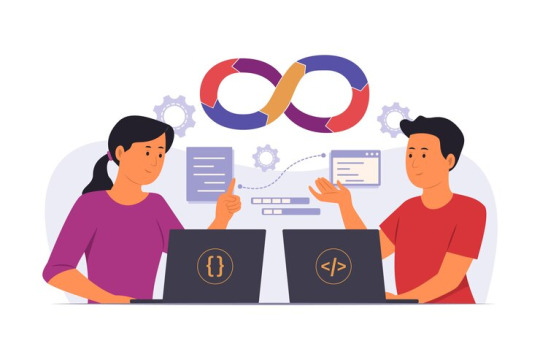
Sure, here are some Java Full Stack Developer interview questions:
What is the difference between JDK, JRE, and JVM?
Explain the concept of object-oriented programming and its key principles.
What is a servlet? How does it differ from an applet?
What is JDBC? How do you connect Java applications to databases using JDBC?
Can you explain the Spring framework and its core features?
What is RESTful web services? How do you implement RESTful APIs in Java?
Explain the MVC (Model-View-Controller) architecture and its advantages in web development.
What are some commonly used design patterns in Java? Provide examples.
How do you handle transactions in a Java application? Discuss the transaction management options.
What tools and technologies do you use for front-end development in a Java Full Stack environment?
Can you explain the concept of microservices architecture? How does it differ from monolithic architecture?
How do you ensure security in a Java web application? Discuss some best practices.
What is Docker, and how do you use it in Java application deployment?
Discuss the differences between SOAP and RESTful web services.
Can you explain the concept of dependency injection and how it is implemented in Spring?
These questions cover a range of topics typically encountered in Java Full Stack Developer interviews. Candidates should be able to demonstrate their understanding of Java programming, web development concepts, frameworks like Spring, and related technologies.
Python Full Stack Developer Interview Questions

Certainly! Here are some Python Full Stack Developer interview questions:
What is the difference between Python 2 and Python 3? Why should we use Python 3 for new projects?
Explain the concept of virtual environments in Python and why they are useful.
How does Flask differ from Django? When would you choose one over the other for a web development project?
What is ORM (Object-Relational Mapping)? Provide an example of an ORM library used in Python.
Describe the process of deploying a Flask or Django application to a production server.
What are decorators in Python? How can decorators be used in web development?
Explain the role of WSGI (Web Server Gateway Interface) in Python web applications.
What is RESTful API? How would you design and implement a RESTful API using Python?
Discuss the importance of testing in software development. What are some popular testing frameworks used in Python?
How do you handle database migrations in Django or Flask applications?
Describe the difference between synchronous and asynchronous programming. When would you choose asynchronous programming in Python?
What are some strategies for optimizing the performance of a Python web application?
Discuss the security considerations you would take into account when developing a web application in Python.
Have you worked with any cloud platforms for deploying Python applications? If so, which ones and what was your experience?
Can you explain the concept of caching in web development? How would you implement caching in a Python-based web application?
These questions cover a range of topics relevant to python full stack syllabus , including web frameworks, databases, testing, optimization, security, and deployment. Adjust the complexity of the questions based on the candidate's level of experience.
Tips for Acing Full Stack Developer Interviews
Review and practice coding exercises related to data structures, algorithms, and design patterns.
Showcase your portfolio projects and highlight your contributions and problem-solving skills.
Prepare for behavioral questions by reflecting on past experiences and achievements.
Stay updated with the latest trends and technologies in Full Stack Development.
Conclusion
In conclusion, Full Stack Developer interviews in 2024 require a comprehensive understanding of various technologies, from core programming languages to advanced frameworks and tools. By preparing diligently and showcasing your skills and experiences effectively, you can increase your chances of landing a rewarding Full Stack Developer role.
FAQs
What is the role of a Full Stack Developer? A Full Stack Developer is responsible for designing, developing, and maintaining web applications, handling both frontend and backend aspects of the software.Which programming languages are essential for Full Stack Development? Key languages include JavaScript, Python, Java, and frameworks such as React, Angular, Spring Boot, and Django.How can I improve my skills as a Full Stack Developer? Practice coding regularly, work on real-world projects, stay updated with industry trends, and participate in online communities and forums.What are some common challenges faced by Full Stack Developers? Challenges may include managing diverse technologies, ensuring scalability and performance, and staying updated with rapid technological advancements.What opportunities does Full Stack Development offer in the job market? Full Stack Developers are in high demand across industries, offering lucrative career prospects and opportunities for growth and innovation.
and innovation.
0 notes
Photo
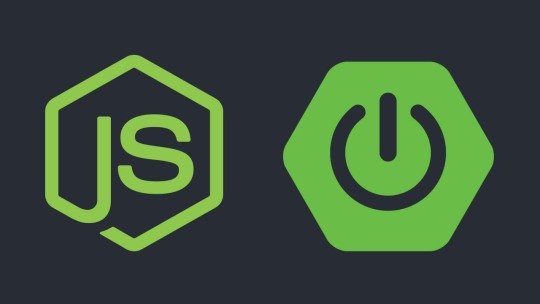
Node.js vs. Spring Boot — Which Should You Choose? ☞ https://school.geekwall.in/p/tdRFB0Z1_/node-js-vs-spring-boot-which-should-you-choos #nodejs #javascript
2 notes
·
View notes
Photo
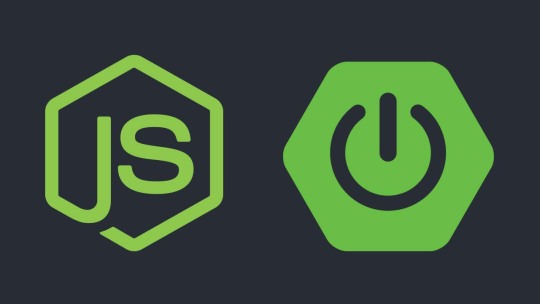
Node.js vs. Spring Boot — Which Should You Choose? ☞ https://school.geekwall.in/p/tdRFB0Z1_/node-js-vs-spring-boot-which-should-you-choos #nodejs #javascript
2 notes
·
View notes
Photo

Node.js vs. Spring Boot — Which Should You Choose? ☞ https://school.geekwall.in/p/tdRFB0Z1_/node-js-vs-spring-boot-which-should-you-choos #nodejs #javascript
1 note
·
View note
Text
Using Docker for Full Stack Development and Deployment

1. Introduction to Docker
What is Docker? Docker is an open-source platform that automates the deployment, scaling, and management of applications inside containers. A container packages your application and its dependencies, ensuring it runs consistently across different computing environments.
Containers vs Virtual Machines (VMs)
Containers are lightweight and use fewer resources than VMs because they share the host operating system’s kernel, while VMs simulate an entire operating system. Containers are more efficient and easier to deploy.
Docker containers provide faster startup times, less overhead, and portability across development, staging, and production environments.
Benefits of Docker in Full Stack Development
Portability: Docker ensures that your application runs the same way regardless of the environment (dev, test, or production).
Consistency: Developers can share Dockerfiles to create identical environments for different developers.
Scalability: Docker containers can be quickly replicated, allowing your application to scale horizontally without a lot of overhead.
Isolation: Docker containers provide isolated environments for each part of your application, ensuring that dependencies don’t conflict.
2. Setting Up Docker for Full Stack Applications
Installing Docker and Docker Compose
Docker can be installed on any system (Windows, macOS, Linux). Provide steps for installing Docker and Docker Compose (which simplifies multi-container management).
Commands:
docker --version to check the installed Docker version.
docker-compose --version to check the Docker Compose version.
Setting Up Project Structure
Organize your project into different directories (e.g., /frontend, /backend, /db).
Each service will have its own Dockerfile and configuration file for Docker Compose.
3. Creating Dockerfiles for Frontend and Backend
Dockerfile for the Frontend:
For a React/Angular app:
Dockerfile
FROM node:14 WORKDIR /app COPY package*.json ./ RUN npm install COPY . . EXPOSE 3000 CMD ["npm", "start"]
This Dockerfile installs Node.js dependencies, copies the application, exposes the appropriate port, and starts the server.
Dockerfile for the Backend:
For a Python Flask app
Dockerfile
FROM python:3.9 WORKDIR /app COPY requirements.txt . RUN pip install -r requirements.txt COPY . . EXPOSE 5000 CMD ["python", "app.py"]
For a Java Spring Boot app:
Dockerfile
FROM openjdk:11 WORKDIR /app COPY target/my-app.jar my-app.jar EXPOSE 8080 CMD ["java", "-jar", "my-app.jar"]
This Dockerfile installs the necessary dependencies, copies the code, exposes the necessary port, and runs the app.
4. Docker Compose for Multi-Container Applications
What is Docker Compose? Docker Compose is a tool for defining and running multi-container Docker applications. With a docker-compose.yml file, you can configure services, networks, and volumes.
docker-compose.yml Example:
yaml
version: "3" services: frontend: build: context: ./frontend ports: - "3000:3000" backend: build: context: ./backend ports: - "5000:5000" depends_on: - db db: image: postgres environment: POSTGRES_USER: user POSTGRES_PASSWORD: password POSTGRES_DB: mydb
This YAML file defines three services: frontend, backend, and a PostgreSQL database. It also sets up networking and environment variables.
5. Building and Running Docker Containers
Building Docker Images:
Use docker build -t <image_name> <path> to build images.
For example:
bash
docker build -t frontend ./frontend docker build -t backend ./backend
Running Containers:
You can run individual containers using docker run or use Docker Compose to start all services:
bash
docker-compose up
Use docker ps to list running containers, and docker logs <container_id> to check logs.
Stopping and Removing Containers:
Use docker stop <container_id> and docker rm <container_id> to stop and remove containers.
With Docker Compose: docker-compose down to stop and remove all services.
6. Dockerizing Databases
Running Databases in Docker:
You can easily run databases like PostgreSQL, MySQL, or MongoDB as Docker containers.
Example for PostgreSQL in docker-compose.yml:
yaml
db: image: postgres environment: POSTGRES_USER: user POSTGRES_PASSWORD: password POSTGRES_DB: mydb
Persistent Storage with Docker Volumes:
Use Docker volumes to persist database data even when containers are stopped or removed:
yaml
volumes: - db_data:/var/lib/postgresql/data
Define the volume at the bottom of the file:
yaml
volumes: db_data:
Connecting Backend to Databases:
Your backend services can access databases via Docker networking. In the backend service, refer to the database by its service name (e.g., db).
7. Continuous Integration and Deployment (CI/CD) with Docker
Setting Up a CI/CD Pipeline:
Use Docker in CI/CD pipelines to ensure consistency across environments.
Example: GitHub Actions or Jenkins pipeline using Docker to build and push images.
Example .github/workflows/docker.yml:
yaml
name: CI/CD Pipeline on: [push] jobs: build: runs-on: ubuntu-latest steps: - name: Checkout Code uses: actions/checkout@v2 - name: Build Docker Image run: docker build -t myapp . - name: Push Docker Image run: docker push myapp
Automating Deployment:
Once images are built and pushed to a Docker registry (e.g., Docker Hub, Amazon ECR), they can be pulled into your production or staging environment.
8. Scaling Applications with Docker
Docker Swarm for Orchestration:
Docker Swarm is a native clustering and orchestration tool for Docker. You can scale your services by specifying the number of replicas.
Example:
bash
docker service scale myapp=5
Kubernetes for Advanced Orchestration:
Kubernetes (K8s) is more complex but offers greater scalability and fault tolerance. It can manage Docker containers at scale.
Load Balancing and Service Discovery:
Use Docker Swarm or Kubernetes to automatically load balance traffic to different container replicas.
9. Best Practices
Optimizing Docker Images:
Use smaller base images (e.g., alpine images) to reduce image size.
Use multi-stage builds to avoid unnecessary dependencies in the final image.
Environment Variables and Secrets Management:
Store sensitive data like API keys or database credentials in Docker secrets or environment variables rather than hardcoding them.
Logging and Monitoring:
Use tools like Docker’s built-in logging drivers, or integrate with ELK stack (Elasticsearch, Logstash, Kibana) for advanced logging.
For monitoring, tools like Prometheus and Grafana can be used to track Docker container metrics.
10. Conclusion
Why Use Docker in Full Stack Development? Docker simplifies the management of complex full-stack applications by ensuring consistent environments across all stages of development. It also offers significant performance benefits and scalability options.
Recommendations:
Encourage users to integrate Docker with CI/CD pipelines for automated builds and deployment.
Mention the use of Docker for microservices architecture, enabling easy scaling and management of individual services.
WEBSITE: https://www.ficusoft.in/full-stack-developer-course-in-chennai/
0 notes
Photo

Node.js vs. Spring Boot — Which Should You Choose? ☞ https://school.geekwall.in/p/tdRFB0Z1_/node-js-vs-spring-boot-which-should-you-choos #nodejs #javascript
1 note
·
View note
Photo
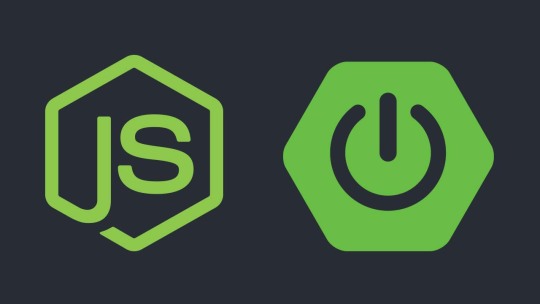
Node.js vs. Spring Boot — Which Should You Choose? ☞ https://school.geekwall.in/p/tdRFB0Z1_/node-js-vs-spring-boot-which-should-you-choos #nodejs #javascript
1 note
·
View note
Text
How To Become A Full Stack Developer In Ninety Days
We at 360DigiTMG give our students the choice of each classroom and online studying. There are many initiatives that one can take up in this subject to realize sensible knowledge. You can work on constructing a web software for actual estate, storage options, mobile tracking, reporting tool software, or a wholesale distribution system that provides sooner inquiries to the monetary information. It will assist you to grasp MongoDB installation, knowledge modelling, schema design, knowledge indexing, monitoring, sharding, replication and aggregation.
Handle diverse data varieties and handle your purposes effectively using MongoDB. Brush up on your knowledge of software development fundamentals, Agile and Scrum methodologies, Java and information structures, GIT to manage version control systems, and Maven to handle project dependencies. This Full Stack Java developer course in Kuala Lumpur will allow you to increase your Full-Stack Developer occupation. To design highly net-scalable packages, you may research prime business expertise with a Full Stack Java developer course in Kuala Lumpur together with Servlets, Hibernate, Spring Boot, Angular, and JSPs, as well as MVC, web services, and SOA.
They will help you in gaining the maximum profit out of this net growth certification program and help you understand your full potential. A certificate in the skilled world right now, the best method for you to prove your experience in any area. It most frequently acts as an entry point for you to get entry to nice job alternatives to showcase your skills and get the credit score you deserve. This is particularly true in web improvement as well, with the wide range of languages and instruments which are used at present. The greatest contributors include medicines, medical tools, smelting, lumber, wood pulp, Islamic finance, petroleum, and liquefied natural fuel.
Whether you are an skilled skilled working in the IT industry, or an aspirant planning to enter the world of full-stack internet improvement, This Program is designed and developed to accommodate numerous professional backgrounds. This module will help college students in designing and developing powerful modern net applications that type the base for the apps, websites, and techniques that businesses use daily. The training commences with teaching you the way to code net apps with spectacular designs and possess the data to implement dynamic HTML results using some cool tags. Each module consists of multiple technologies that will help you acquire more expertise and discover completely different applied sciences and frameworks at Frontend at backend and Database (NoSQL-MongoDB).
All these firms provide significant development opportunities solely if you have a full stack java developer certification in Kuala Lumpur. Full-stack java developers ought to try to achieve certifications for the abilities they need to master. Some of them embody Angular coaching, Python Fundamentals, Node.JS course, and Selenium coaching course.
You’ll be guided step-by-step right from the basics to the superior subjects. AI has turn into an integral part of net development at the enterprise level. With Chatbots attending to queries by way of text and voices and minimizing the prices by half has revolutionized customer expertise.
Still, I personally discovered Max'sThe Complete Angular Guide programs most fun and useful and highly recommend to anybody who wants to study Angular in-depth and in a quick time. By introducing features like auto-configuration and Starter dependencies, Spring Boot alleviates the ache of Java developers who spend lots of time configuring Spring and finding a set of compatible libraries to work collectively. Though there isn't a ultimate verdict on React vs. Angular battle yet, going with the pattern, it is more and more wanting that React is going to win this epic war.
The Full-Stack Web Developer Certificate is your badge of recognition. Display your certificate and earn appreciation from office colleagues and business friends.
Back-end languages and frameworks corresponding to Express, Node.js, Python, Django, and so forth., for creating functions. Detailed directions in entrance-finish development, which lets you create rich and engaging person interfaces, in addition to server-aspect improvement, which lets you create powerful and scalable websites and back-finish APIs. With a structured curriculum and business veterans as instructors, Scaler Academy is leaving no stone unturned to make skilled internet builders out of every applicant. As we understand what's the gist of full stack developer programs and what we should aspire to anticipate from them, we transfer forward to deliver you the record of 15 best full stack developer programs to help you obtain your best. Oracle, SQL, NoSQL, and MongoDB are the database frameworks one must be skilled at, along with cloud computing. FULL STACK DEVELOPMENT is a talent related to those that can work with website growth, net software improvement and operations of a website.
Explore more on - full stack developer course with placement
https://360digitmg.com/course/certification-program-on-full-stack-web-developer
INNODATATICS SDN BHD (1265527-M)
360DigiTMG - Data Science, IR 4.0, AI, Machine Learning Training in Malaysia
Level 16, 1 Sentral, Jalan Stesen Sentral 5, KL Sentral, 50740, Kuala Lumpur, Malaysia.
+ 601 9383 1378 / + 603 2092 9488
#full stack development course#full stack developer course#full stack web development course malaysia
0 notes